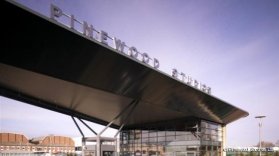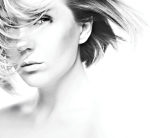Codes and Coventions of the Thriller Genre
Thriller is a type of genre that inflicts suspense and tense emotions. These films or television programmes tend to have plots that build up and leave people on the edge of their seats. Examples of thriller movies are Seven, Psycho, The Silence of the Lambs and World War Z. A recent series on Netflix called ‘Stranger Things’ has been a monumental success and has everyone talking.
In a thriller you would expect to see frequent use of low key lighting, shadows, contrasting camera angles and dramatic music. Typically there is a lot of close-ups of characters faces to conflict emotions. The storyline normally implies that something bad is going to happen to the protagonist character.
Editing a thriller typically involves lots of quick jump cuts as this helps to create pace and drama. Furthermore sound in thrillers is very tense to reinforce the mood and tone of the film. It often starts slow and builds up to be more effective and interesting for the audience. A good example of this is the soundtrack from the movie ‘Jaws’ as it is recognised worldwide.
Mise en scene includes props, location, facial expressions, body language, costume, hair and makeup. As I have already established the lighting is usually low key as it creates strong shadows and contrast between light and dark. Costumes are predictably dark or ordinary depending on the character. Makeup and hairstyles vary as well as the location.
After researching the genre thriller I found a website that described 5 ingredients used in a thriller movie to make it successful.
- Obviously you need to have a gripping story/plot.
- Open with an action scene.
- Include multiple point of view shots.
- Show don’t tell.
- Pace.
Before taking media I never gave thriller movies a chance and I assumed I would hate them before even watching them. However after researching the genre in more depth and learning about hybrid movies I have broadened my interest in the genre and I now wouldn’t hesitate to watch a thriller. I have become more open-minded.






 demy as an option for after A levels. I have always been interested in the film industry but never decided what job role I wanted to be until I was in the school production ‘We Will Rock You’. An A level student at the time was doing the main characters makeup using special effects makeup and it really inspired me. From that moment onwards I started buying products and watching tutorials and I found myself discovering what I wanted to be when I’m older.
demy as an option for after A levels. I have always been interested in the film industry but never decided what job role I wanted to be until I was in the school production ‘We Will Rock You’. An A level student at the time was doing the main characters makeup using special effects makeup and it really inspired me. From that moment onwards I started buying products and watching tutorials and I found myself discovering what I wanted to be when I’m older.




